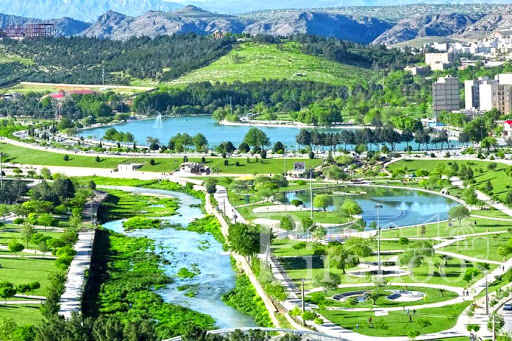Khorramabad
The city of Khorramabad is located in the center of Lorestan province, in western Iran. Surrounded by mountains that are excellent reservoirs of water, the city has many natural springs that are exceptionally cool, even during the hot season. Its unique climate has allowed different peoples to settle in this place throughout history. The abundance of water springs, the beautiful Lake Kio that promotes trade between the west and the south, make Khorramabad one of the most tourist cities in Iran. The city’s population is mainly made up of Lur, an Iranian people who speak the Lori language. During the summer, nomadic tribes migrate to the city to sell their wares in the city’s many bazaars.
The Lorestan region is best known for its bronze objects, made with the technique known as “lost wax”, and especially for its finely crafted pieces decorated with images and figures of horses or legendary animals.
The art of bronze making testifies to several centuries of culture of a peasant and warrior people at the same time. In the fourth millennium BC., this art reached its apogee. Bronze work is a traditional Iranian art that is passed down from generation to generation and that served as a means of communication between the tribes of the time. The objects, tools and other artifacts of this type, the remains of which have been discovered, are mainly swords, scimitars, sticks and other weapons of the time. Some luxury items are also discovered from this period, such as jewelry or other table and decoration objects, which are exhibited in various museums in Iran, mainly those in Tehran.
Falak-ol-Aflak Castle
Falak-ol-Aflak Castle, a magnificent 5,300-square-meter fortress, stands on top of a hill with magnificent views. The fort, also known as “Dej-e Shapur” or Shapur Fort, dates from the Sassanid era. The castle had eight towers and very high solid walls: a perfect place of security and a real barricade to fight off any attack. In contemporary times, before the Islamic Revolution, it was used as a prison.
Falak-ol-Aflak Castle Museum
Part of the building became a museum in the years 1976-1977, with 2 sectors: the archaeological and the anthropological.
In addition to the great harmony and refinement of its architecture, Khorramabad hides exceptional treasures, among them: the stone whirlpool, a kind of rotating tank used to distribute the water. This cultural and historical work is one of the constructions dating from the Sassanid period of the 3rd-4th century AD. A few meters away are the remains of an old mill that used the water from the basin to turn the blades of the mill.
Shapuri Bridge
Also known as the Shekasteh (broken) bridge, it is about 230 meters long and its construction dates back to the Sassanid period. This bridge is located 2 km southwest of Khorramabad and west of the ancient city of Shahpur Khast. It is one of the architectural masterpieces of bridge building from the Sassanid period. The bridge consisted of 28 arches of which only 6 remain. Each pillar measures 66 m. (11 x 6) and its current height is 16 m. The arches of this bridge were built in stone, while the bridge itself is a mixture of stone and mortar.
Mirza Seyed Reza Bazaar
It is a covered bazaar in Khorramabad. It was also a center of commerce for the surrounding towns. The bazaar has two “aisles”: the east aisle has 24 stores and the north aisle 16. Today, the bazaar is the gold buying and selling center of the city.
If you are passionate about mountains, bazaars, Arabian Nights, the Silk Road, popular markets, hiking, photography, nomadism, the desert, anthropology, historical landscapes and the fascinating culture of the Middle East , SITO Travel will help you organize your trip to Iran. Contact us because our experience is born and develops in the field.
Dusheh Cave
A cave located in Khorramabad that contains 110 prehistoric paintings. It is located in the village of Korshurab, one of the surrounding villages in the Changi district of Khorramabad. The gallery has preserved these paintings for years and thousands of years due to natural factors, which is why they have been well preserved during various climatic phenomena.
Akhund Abu Historic House
Dating back to the beginning of the Pahlavi dynasty and known as the ‘House of Tourism’, it is located in Khorramabad, in the west wing of the historic Falak-ol-Aflak Castle. The house has a special style becoming a true example of the Pahlavi style. The main patio is decorated with a central pond and a water fountain; in turn, it is surrounded by rooms that rise over two floors. The interior facade has a unique monochromatic color due to the color of the bricks used to decorate the exterior walls. Looking at the windows, the stained glass windows and, above all, the upper arch, also made of brick, which give a special architectural touch to Akhund Abu’s house, we realize the beauty of the work.



Comments